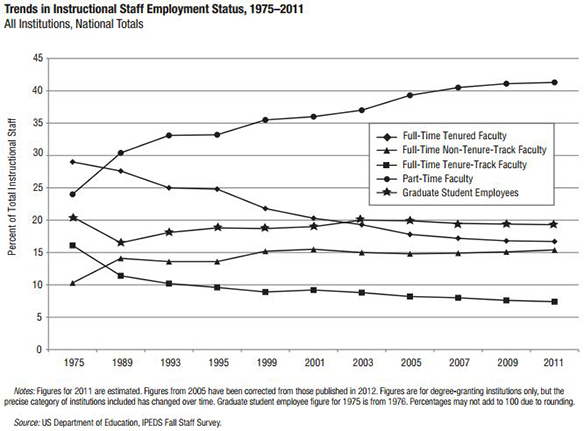While the stereotype of the college professor might still be an elbow-patched intellectual cozied up in an office, it might be more accurate to place him in his car. A new report from the American Association of University Professors finds that more than 40 percent of college instructors are part-time, often driving from campus to campus to cobble together enough classes to enable them to pay rent. These types of employees far outnumber tenured and tenure-track faculty, who make up less than a quarter.

This data suggest that the term “precariat” applies well to a significant proportion of college and university professors. Coined by economist Guy Standing, the term is meant to draw attention to the economic fragility of many lower wage workers in today’s labor market. It’s a combination of the word “precarious” and “proletarian,” a word that is used to refer to the working class under capitalism.
Part-time faculty count as part of the precariat because their jobs are contingent (renewed semester to semester), low paid, and bring little or no benefits. Let me put it this way. I just finished my first year as a tenured professor after six years on the tenure track. I teach five classes. An adjunct at a public research university would have to teach more than 23 classes to earn my salary (average pay is $3,200/class); someone teaching at community colleges would have to teach more than 33 (at $2,250/class). Of course, my salary also reflects research and institutional service, but my hourly wage is obviously far out-of-proportion to that of part-time faculty. Plus I get a wide range of benefits; adjuncts usually get nothing.
When government funding of higher education shrinks, colleges and universities respond by cutting corners where they can. Hiring adjuncts is one way to do that. It’s important to remember, then, that funding cuts hurt not only students; they also hurt jobs.
This post originally appeared onSociological Images, a Pacific Standard partner site.




